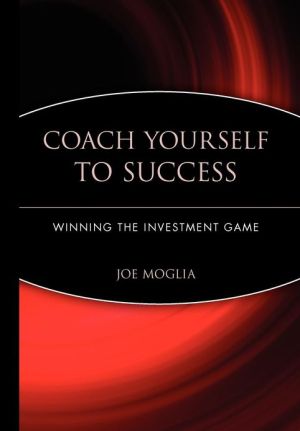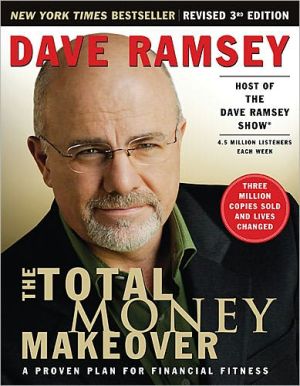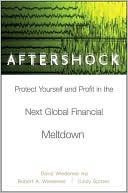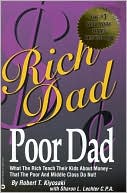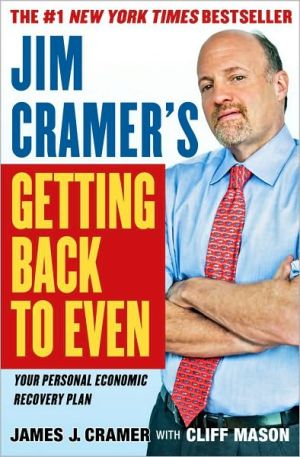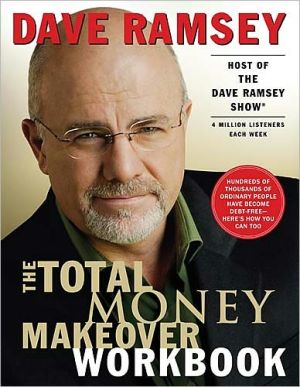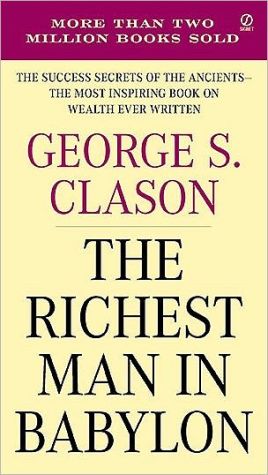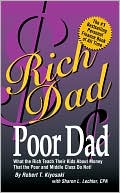Coach Yourself To Success
Praise for Coach Yourself to Success\ "Knowing how to make money and hold onto your money has never been easy. Joe's strategies are clear, accessible, and performance based. Joe, thanks for taking the mystery out of investing."\ —Maria Bartiromo, host and managing editor of the nationally syndicated program the Wall Street Journal Report with Maria Bartiromo and CNBC's Closing Bell.\ "Leave it to Joe to look out for the rest of us Joes and Joannes. Practical. Useful. Meaningful. The man who...
Search in google:
Praise for Coach Yourself to Success "Knowing how to make money and hold onto your money has never been easy. Joe's strategies are clear, accessible, and performance based. Joe, thanks for taking the mystery out of investing." —Maria Bartiromo, host and managing editor of the nationally syndicated program the Wall Street Journal Report with Maria Bartiromo and CNBC's Closing Bell. "Leave it to Joe to look out for the rest of us Joes and Joannes. Practical. Useful. Meaningful. The man who democratized trading has now leveled the playing field." —Neil Cavuto, Vice President of FOX News Channel, host of Your World with Neil Cavuto and author of the New York Times bestseller, More than Money "Joe Moglia has provided a coach's playbook for everyone. This is an invaluable tool for executing the right investing moves to win the game!" —Bill Bolster, former CEO CNBC, CNBC Intl. "If there is a parallel between football and investing, it is that to be successful you have to stick to the fundamentals. 'Coach' Joe Moglia lays out the fundamentals for you in a concise, straightforward manner. Read it and win." —Vince Lombardi, Jr. "Coach Joe Moglia knows the game and knows it well. His clearly written book is indispensable for the novice and great fun for the knowledgeable." —Bob Kerrey, President, New School University "As the president of Ameritrade, Joe Moglia revolutionized online trading, making individual investors successful as never before. In Coach Yourself to Success, Moglia's insights give individual investors a new and powerful tool to achieve their financial objectives."—Roger McNamee, cofounder of Elevation Partners, Silver Lake Partners, and Integral Capital Partners, and author of The New Normal
Coach Yourself to Success\ \ By Joe Moglia \ John Wiley & Sons\ ISBN: 0-471-71984-6 \ \ \ Chapter One\ STOCKS\ Why We Own Them\ Stock n 1: the proprietorship element in a corporation usually divided into shares and represented by transferable certificates.\ Source: Merriam-Webster's Collegiate Dictionary, 11th edition\ A share of stock represents equity, or ownership, in a company. Even if you own a single share, you're still a part owner. A small part, true, but an owner nonetheless. If you've never really understood the nature of stock and how it comes into existence, you're in good company. Millions of intelligent adults never got "the talk" from their parents about the financial facts of life. If you're one of them, here's how stock is "born."\ Let's say 21-year-old twin brothers Willy and Wally Widget invent an ingenious item. They name the invention after themselves and, with some seed money from their Uncle William, start manufacturing widgets on a small scale. The venture is a huge success and sales go through the roof, as the media can speak of nothing but the Widget wunderkinder. Eager to raise money to build new factories and take the company to a whole new level, the savvy Widget boys decide to offer part of their company to the public-for a price.\ A large investment bank or brokerage firm underwrites the initial public offering (IPO) of shares to a few select clients-mostly large institutional investors-at a given price and the Widgetsget the much-needed capital to expand and grow their business. After the shares are sold to the initial investors, they're traded on the open, or secondary, market, where anyone can buy them. The value of a share is no longer fixed, but goes up and down, depending upon the company's financial health and those other famous twins, Supply and Demand. And that's how stock makes its way into the financial world.\ Over 84 million individuals in the United States own stock, or equities, either directly or through stock mutual funds (we'll get to those later on). What's the big attraction? Well, there's always the fantasy that you'll be the one to scoop up one million shares of say, Widget, at $5.00 a share, before the general public catches on and it soars to $120 a share. Of course, we've all heard stories of this kind of luck and it sometimes happens. So do lottery jackpots. However, you can't bank on them. But if you do some digging and make prudent choices, you should reasonably be able to count on the earnings from:\ Growth stocks. Companies that still have a lot of growing to do typically put profits back into the business and are referred to as "growth" stocks. These have generally outperformed their peers in past earnings and are expected to continue to do so in the future.\ When the share price goes up, your capital has appreciated: that is, your investment has increased in value. Of course, you don't really capture, or realize, that gain, until you sell the stock. It's the same in the unfortunate case the stock price goes down-the loss is merely on paper until the shares are sold.\ Income stocks. An investor can bolster his/her income through a payout of company profits, or dividends. Typically, large established businesses like utilities and some banks are the most likely to distribute profits. The average shareholder holds what's called "common" stock, in which he or she may receive quarterly dividend distributions, as well as the right to have a vote on important company matters-like electing a board of directors. The greater the distribution, the greater the income.\ Institutional and very affluent individual shareholders are more likely to own "preferred" stock. These stockholders are in line before common stockholders when it comes to getting some money back should the company go belly up, plus they get first dibs on dividends. However, preferred shareholders only receive a set amount; they won't reap added rewards should there be a boost in profits.\ If you're nearing retirement and are concerned about increasing your income flow, or if you're just a conservative investor who would secretly prefer to keep his or her money in the cookie jar, consider a dividend reinvestment plan (DRIP or DRP). In these programs, you regularly buy shares of stock-minimizing or waiving trading costs-in the sturdy heavyweights that have solid histories of distributing dividends.\ Have the dividends reinvested to buy more shares of stock if you don't need the income right away. This is a savvy way to buy more stock and it's called dollar-cost averaging. Since share prices go up and down, your continued flow of dollars back into the company will buy you more shares when the price is down and fewer shares when the price goes up. The average price per share that you'll pay will be lower with dollar-cost averaging; it's a safeguard against our natural human impulse to buy more stock when it's going up and less when the price is down. (If the stock continues to go down, do additional research.) Another way to reap high dividends is to buy what are called the Dogs of the Dow, the 10 highest-yielding stocks on the Dow Jones Industrial Average (more on this later).\ Value stocks are those whose worth is not fully reflected in their share price. A company may be undervalued if it has gone through hard times and experts believe it will turn around. Perhaps the employees were on strike or there was a public relations disaster, such as the case of Johnson & Johnson (JNJ) and the Tylenol tampering in 1982. For a while, JNJ was practically a dirty word in the pharmaceutical industry. But it was a strong company with solid fundamentals at its core. Smart value investors bought the stock after the price plunged, believing that the company would right itself and regain its former stature-which is precisely what happened.\ Spotting a Stock that Is Ripe for the Picking\ How can you tell which stocks are going to be moneymakers? This is the $64,000 question-and, sometimes, it's worth much more than that. Start by logging onto the top financial Web sites (see Resources at the end of this book). You'll see experts' recommendations for stocks that have a great deal of future potential. But it's wise to do some research on your own. The average person will probably find it difficult to grasp the accounting principles necessary to truly understand a company's balance sheets. The good news? It doesn't matter one bit. You don't need to be a certified public accountant or financial planner to spot a promising investment-and you don't have to pay through the nose to have someone do it for you.\ A good way to begin evaluating whether a stock is a smart prospect is to research it at financial Web sites such as Morningstar.com. (ValueLine.com is another research starting point.) You'll need to enter the company's ticker symbol, which is a combination of one or a few letters that signifies the company's name. Usually, it's an abbreviation of sorts, but not always. Let's say you enter WDG (for Widget) in the search bar.\ The first piece of information you want to find is its P/E, or price to earnings ratio. That means:\ P/E Ratio = Price per share/Annual earnings per share\ The lower the company's earnings relative to the price of the stock, the higher the P/E. A high P/E may mean the stock is either overvalued or overpriced. If the earnings per share are 10 cents and the share price is $15.00, that means a whopping P/E of 150! Your goal is to find a stock that has yet to reach its potential.\ You'll get a better sense of where a company typically stands if you look at the historical, or past years', P/E and compare that to the current figure. Don't be guided solely by the most recent earnings, since one or two quarters may have been exceptionally good-or bad-and may not reflect general performance. When it comes to growth stocks, you also want to look at the rate at which profits grow, or the earnings growth rate; ideally, the P/E ratio should be lower than the growth rate, which means the stock is undervalued. An attractive P/E ratio should be comparable to or less than the P/E of the industry (in Widget's case, that is manufacturing).\ Another indicator of financial health is the price-book ratio; instead of comparing the share price to earnings, this compares the price to the company's assets, also called its book value. Investors looking for a bargain seek out stocks selling for less than their book value. So do corporate raiders who look for companies that might be ripe for an acquisition, after which parts of the company can be sold off for a profit.\ Financial websites generally will give you a stocks five-year P/E ratio, as well as suggested price points at which to buy, and sell, and an estimate of the stock's fair market value. Morningstar for example uses a star rating (five stars is the highest) and letter grading that evaluates stocks according to their growth, valuation and, financial health.\ Let's say there isn't such an obvious reason for a company being undervalued or even for determining that's the case in the first place. How would you know? Rather than go through a complicated analysis to determine the value of a company's worth relative to its price, look to Morningstar's analysis of 1,000 stocks. It identifies them as value or growth, and specifies the size according to market cap. A company's market capitalization is the number of shares outstanding multiplied by the share price. Large-cap stocks are companies with capitalizations of over $5 billion; mid-caps, between $1.5 and 5 billion; and small-caps, less than $1.5 billion.\ Investing rule #1: You never want to own just one type of stock (or just one type of any asset class, for that matter). The stock market goes in cycles. When large companies are thriving, small and medium-sized ones tend to experience down times. Size really does matter when it comes to constructing a portfolio of stocks. You want to have a mix not only of size, but also of growth and value, because when one group is underperforming, it's likely that the other group is doing well.\ You should also make sure your holdings reflect a mix of the different sectors, or segments, of the economy, since they, too, go in cycles. If you own a stock in a high-performing sector, you'll do very well; if you own a stock in a poor-performing sector, you won't do well. Own stock in both sectors and you'll likely do well over time. Morningstar recognizes 12 sectors: Software, Hardware, Media, Telecom, Healthcare, Consumer Services, Business Services, Financial Services, Consumer Goods, Industrial Materials, Energy, and Utilities. Specific industries are mapped to one of the 12 sectors. For example, Citigroup is in the "International Banks" industry within the "Financial Services" sector.\ An important way of evaluating a stock's performance is to compare it to the market as a whole, or more narrowly, the segment that reflects similarly sized companies. Generally, investors compare a stock's performance and P/E to that of an index. Indexes give an overall sense of how the stock market-or portions of it-is performing.\ The first stock index was created by Charles Dow and Edward Jones. They picked 12 large industrial companies and, in 1896, began publishing the daily status of their stock prices. By tracking the performance of these businesses, investors could assess the state of the economy. The list grew to 30 "blue chip" companies and became known as the Dow Jones Industrial Average (DJIA).\ Trivia tidbit: the only company of the original 12 still in the DJIA is General Electric.\ The Standard & Poor's 500 Index (called the S&P for short), tracks a broad base of 500 widely held companies and is the primary benchmark used by most investors. It's calculated so the companies considered bellwethers of the marketplace have more weight than other companies. The NASDAQ 100 tracks those, mostly tech, stocks that trade through its electronic system. Then there's the Russell 2000 which tracks primarily small- and mid-sized companies, and the Wilshire 5000, considered to be the broadest index of all since it tracks the stock of the vast majority of public companies. Of course, there are many other indexes; these are just the major ones.\ Aside from comparison to an index, there are also other subjective criteria for deciding whether to invest in a stock. Investment guru Warren Buffett won't invest in a company if he doesn't understand the nature of the business. His company's holdings include such known commodities as Coca-Cola, Gillette and American Express. Not a "techie," he was ridiculed for refusing to go along in the tech-wild late 1990s. But when millions of investors lost their shirts at the end of the decade, guess who had the last laugh. If you're an automobile salesman, and are sensing a shift in the industry toward say, electric cars, you might want to invest in a company that's at the forefront of the trend. Go with what you know and know what you own.\ Randi G. had a hunch that change would soon be in the air after Florida's presidential election debacle in November of 2000. When she read about a company that makes new and improved voting machines, she decided to invest, feeling certain there would be a strong need for new machines by states seeking to modernize their voting equipment. As it turns out, she was right. After the share price went up 30 percent, she sold out and kept a tidy little profit.\ Where Stocks Are Bought and Sold\ Before you can begin to invest, you have to open a brokerage account. There are a few different options available to you. We'll get into this in much greater detail in Chapter 10, but, in a nutshell, the least expensive route is an online brokerage firm. Here you can buy and sell for less than $11 a pop and have access to third-party investment research. Full-service brokerage firms will charge you a flat fee, a commission of about $100 per trade, or both. In return, you should expect to receive lots of investment guidance and direction as far as which stocks are better buys than others.\ The majority of stocks are sold on one of three exchanges. Think of an exchange like a shopping mall, except there are no chain stores. If you want to buy from the Widget store, for example, you can do so only at the exchange where that company, or "store," is located.\ The most well-known exchange is the New York Stock Exchange (NYSE), or "Big Board." About 5,767 large companies trade on the NYSE where trades are executed auction-style. A specialist on the floor of the exchange must match up a buyer whose bid meets the seller's ask price. The American Stock Exchange (AMEX) primarily lists small- and medium-sized companies. Then there's the National Association of Security Dealers Automated Quotations (NASDAQ), where much but not all of the listed companies involve technology. NASDAQ doesn't have a trading floor; instead, it links buyers and sellers via computer where trades are placed electronically.\ How to Place a Trade\ Market orders are the most common. This means that the broker should buy or sell at whatever the share price is when the order is actually executed. So if the price is listed at $15.25 when you decide to buy, and in the span of time between when you placed the order and when it's filled the price has risen to $15.30, the price you pay is $15.30.\ Limit orders are placed when you don't want to buy or sell unless the share is at a set price. If you want to buy a stock for $46 a share but it now sells for $50, you can place a limit order at $46. If the stock falls below $46, the broker will buy shares for you at the lower price, and you'll save the difference. It works the same on the up side. Say you wanted to sell a stock if it reaches $50 but is now selling for $46. The stock shoots up to $53, the broker sells your shares, and you make even more than you'd originally hoped. All price limit orders carry the risk of missing the market altogether.\ (Continues...)\ \ \ \ \ Excerpted from Coach Yourself to Success by Joe Moglia Excerpted by permission.\ All rights reserved. No part of this excerpt may be reproduced or reprinted without permission in writing from the publisher.\ Excerpts are provided by Dial-A-Book Inc. solely for the personal use of visitors to this web site. \ \
About the Author. Foreword. Acknowledgments. PART ONE: The Basic Tools of Investing. The Pregame Show. Chapter 1: Stocks. Why We Own Them. Spotting a Stock that Is Ripe for the Picking. Where Stocks Are Bought and Sold. How to Place a Trade. Trading Strategies. When to Hold, When to Fold. Chapter 2: Bonds. Basic Bond Features. Bonds in the Marketplace. Bond Issuers. Municipal Bonds. Government-Sponsored Enterprises. Corporations. Bond Ratings. Risk: When Bad Things Happen to Good Bonds. It Looks Like a Bond and Acts Like a Bond, but It’s a.… Chapter 3: Cash. Interest-Bearing Checking Accounts. Savings Accounts. Money Market Funds. Taxable Funds. Tax-Exempt Money Funds. Money Market Accounts. Chapter 4: Mutual Funds. Exactly What Are Mutual Funds? Funds: Better than Individual Stocks and Bonds? Stock Funds. Bond Funds. Index Funds. How to Pick a Fund. Chapter 5: Exchange-Traded Funds. Recipe for an Exchange Traded Fund. Structure of ETFs. PART TWO: The Fundamental Principles of Investing. Half-Time Report. Chapter 6: Goals. Retirement. College Costs. Lifestyle Goals. Chapter 7: Risk Tolerance. No Pain, No Gain / No Risk, No Return. Types of Risk. Test Yourself: Just How Much Risk Can You Tolerate. Ways to Contain Risk. Chapter 8: Asset Allocation. The Basics. Types of Allocation. Where to Begin. More Assets, More Allocation. So How Do You Fill in Your Portfolio’s Blanks? Chapter 9: Monitoring and Rebalancing. What’s Wrong with Holding onto Winners. Know What You Really Own. The Rebalancing Act: How It’s Done. When to Rebalance: Pick a Day, Any Day. Chapter 10: Execute Your Investment Plan. The Self-Directed Investor: You and an On-Line Brokerage Firm. Financial Planners. Fee-Only Financial Advisors. The Full-Service Brokerage Firm. PART THREE: The Postgame Show. Chapter 11: A New Way to Invest. Glossary. Notes. Resources. Index.
